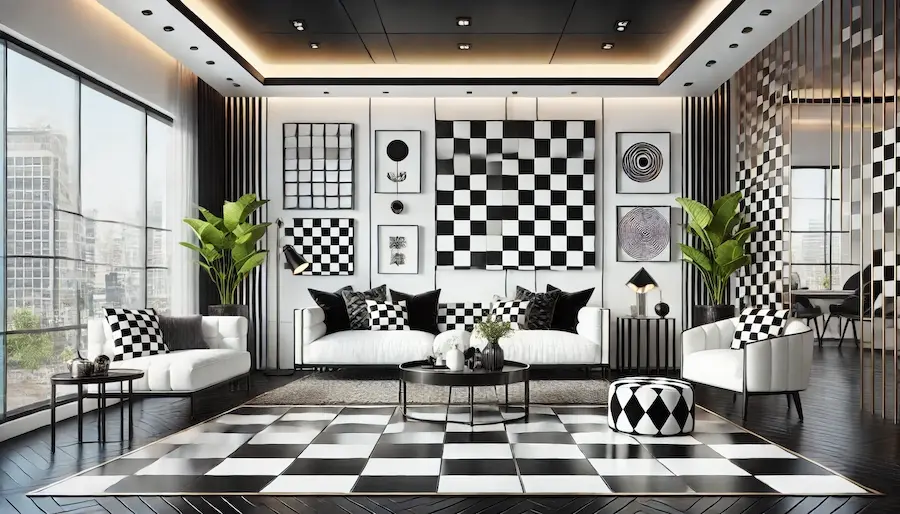Incorporating a checkerboard pattern into your living room introduces a timeless and dynamic aesthetic that can enhance various interior styles. This classic design element, characterized by alternating squares of contrasting colors, adds visual interest and a sense of rhythm to the space.
History and Origins of Checkerboard Design
The checkerboard pattern boasts a rich history, with roots tracing back to ancient civilizations where it adorned floors and textiles. Its popularity surged during the Renaissance, notably in European architecture, and experienced a revival in mid-20th-century interior design. Today, it remains a versatile motif, seamlessly integrating into both traditional and contemporary settings.
Key Features of a Checkerboard Living Room
- Flooring: Implementing a checkerboard floor serves as a striking foundation for the room. Traditional black-and-white tiles offer a bold statement, while subtler combinations, such as muted tones or natural materials like wood, provide a softer appeal. For instance, a polished black and white marble tile flooring can create a sleek look in a spacious living room.
- Rugs and Carpets: For a less permanent option, a checkerboard-patterned rug can introduce the motif without the commitment of altering the flooring. This approach allows flexibility in color schemes and placement, adapting to various design preferences.
- Furniture and Accessories: Incorporate checkerboard patterns through upholstery, cushions, or decorative items. A checkerboard coffee table or patterned throw pillows can subtly echo the theme, adding cohesion to the overall design.
Applications of Checkerboard Design in Living Rooms
- Monochromatic Schemes: A black-and-white checkerboard pattern complements monochromatic color schemes, adding depth and contrast. This combination suits minimalist and modern interiors, providing a clean and sophisticated look.
- Color Variations: Exploring different color pairings, such as beige and white or pastel tones, can soften the checkerboard effect, making it suitable for more eclectic or traditional spaces. For example, a beige and white checkerboard floor can serve as a neutral backdrop, allowing for versatile decor choices.
- Scale and Proportion: Adjusting the size of the squares influences the room’s perception. Larger squares can make a space feel more expansive, while smaller ones may introduce a sense of intricacy and detail.
Considerations When Designing a Checkerboard Living Room
- Balance: Ensure the checkerboard pattern harmonizes with existing design elements to prevent visual overwhelm. Balancing patterned areas with solid colors and simple textures maintains aesthetic equilibrium.
- Material Selection: Choose materials that align with the room’s functional needs and desired ambiance. For instance, ceramic tiles offer durability and a polished look, while a checkerboard rug provides warmth and comfort underfoot.
- Maintenance: Consider the upkeep associated with different materials. Lighter colors may require more frequent cleaning, and certain materials might need specific care to preserve their appearance.
Conclusion
Integrating a checkerboard pattern into your living room design introduces a classic yet versatile element that enhances visual interest and sophistication. Whether through flooring, textiles, or accessories, this motif adapts to various styles, offering a dynamic and timeless appeal to your living space.
